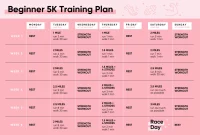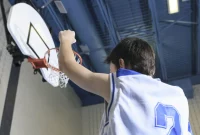Discover the secrets of advanced swimming techniques and take your skills to the next level with our comprehensive guide on diving into excellence. From perfecting your form and streamlining your strokes to mastering the art of starts and turns, this article will equip you with the knowledge to become a true swimming champion.
Mastering Different Swimming Strokes
When it comes to swimming, mastering different strokes is essential for swimmers who want to excel in their chosen sport. Each stroke has its own unique technique and purpose, and understanding and practicing these strokes can greatly improve one’s swimming abilities. Here are some of the most common swimming strokes:
1. Freestyle
Also known as the front crawl, the freestyle stroke is the fastest and most efficient swimming style. In this stroke, the arms alternate in a windmill motion, while the legs kick in a flutter kick. Freestyle is often used in competitive swimming events.
2. Backstroke
Similar to freestyle, the backstroke is performed on the back with the face towards the sky. The arms move in a similar motion to freestyle, while the legs execute a flutter kick. Backstroke is a great stroke for beginners as it enables them to breathe easily.
3. Breaststroke
The breaststroke is easily recognizable by its unique arm and leg movements. The arms move simultaneously in a circular motion, while the legs perform a frog-like kick. Breaststroke is known for its slower speed but is often favored for its ease and efficiency in longer distances.
4. Butterfly
The butterfly stroke is one of the most challenging yet spectacular strokes to master. It involves a simultaneous over-the-water arm recovery and dolphin kick. Butterfly requires a powerful kick and strong upper body to maintain the right technique and speed.
By mastering these four basic strokes, swimmers can greatly enhance their swimming performance. Each stroke targets different muscle groups and offers unique advantages. Incorporating various strokes into training sessions can help swimmers build strength, endurance, and overall proficiency in the water.
Enhancing Speed and Endurance in the Pool
In the world of advanced swimming techniques, enhancing speed and endurance is crucial for achieving excellence in the pool. Whether you are a competitive swimmer or simply looking to improve your swimming skills, mastering these techniques will take your performance to the next level.
1. Streamline Your Body
Begin by perfecting your streamline position off the starting block and throughout your entire swim. By reducing drag and maintaining a straight bodyline, you will minimize resistance in the water and maximize your speed. Focus on elongating your body, pressing your ears between your biceps, and keeping your legs together and toes pointed.
2. Utilize Effective Breathing Techniques
Breathing efficiently is key to maintaining a steady rhythm and avoiding unnecessary fatigue. Practice bilateral breathing, where you alternate breathing on both sides, to ensure even muscle development. Additionally, timing your breaths with your strokes and exhaling underwater can help optimize your oxygen intake.
3. Incorporate Interval Training
Interval training is a highly effective method for improving both speed and endurance. By alternating between high-intensity and recovery intervals, you’ll push your body to adapt and become more efficient in the water. Mix up your training routine with sprints, distance sets, and various stroke drills to target different muscle groups and enhance overall performance.
4. Master Turns and Underwaters
Executing quick and efficient turns, combined with powerful underwater dolphin kicks, can significantly enhance speed and momentum. Practice flip turns and open turns to maintain your speed through each lap, and focus on generating strong and streamlined underwater propulsion. The more distance you cover underwater, the faster your overall time will be.
5. Incorporate Dryland Training
Complementing your pool training with dryland exercises is essential for building strength and power. Work on activities such as core strengthening exercises, resistance training, and flexibility exercises to improve your overall swimming performance. Stronger muscles and increased flexibility will result in more effective strokes and improved endurance in the water.
Breathing Techniques for Swimmers
In the pursuit of excellence in swimming, it is crucial for swimmers to have a strong grasp of advanced techniques. One such technique that significantly impacts performance is proper breathing. Here are some important breathing techniques for swimmers:
1. Bilateral Breathing
One of the primary techniques swimmers should master is bilateral breathing. This involves alternating breathing equally on both sides during freestyle swimming. Bilateral breathing helps maintain balance and symmetry in the stroke, leading to improved efficiency.
2. Exhalation Underwater
Swimmers should focus on exhaling forcefully underwater rather than holding their breath. This ensures a constant supply of fresh air during each breath and reduces the risk of hyperventilation. Exhaling underwater also assists in maintaining better body position.
3. Timing with the Stroke
Coordinating breathing with the stroke is essential. Swimmers should aim to inhale as their arm exits the water and to exhale when their face is in the water. This synchronization allows for smoother breathing and minimizes disruption to the stroke rhythm.
4. Lung Capacity Exercises
Increasing lung capacity through specific exercises benefits swimmers in several ways. Dryland exercises like deep breathing exercises, swimming with a snorkel, and incorporating breathing drills can enhance a swimmer’s ability to take in more air and expel it efficiently during races.
5. Relaxation Techniques
Staying relaxed while swimming is crucial for efficient breathing. Tension in the upper body can hinder the respiratory muscles, making it harder to breathe optimally. Incorporating relaxation techniques such as yoga or meditation into training sessions can improve overall breathing control.
By incorporating these breathing techniques into their training, swimmers can enhance their performance and take their swimming to the next level. Remember, mastering advanced techniques requires practice and dedication in and out of the water.
Dryland Training for Swimmers
In the pursuit of excellence in swimming, athletes need to go beyond their time in the pool and embrace dryland training. Proper dryland exercises can help swimmers improve their strength, power, and overall performance in the water.
Benefits of Dryland Training
Dryland training offers several benefits to swimmers, including:
- Improved strength: Dryland exercises, such as weightlifting, resistance band workouts, and bodyweight exercises, help build muscular strength, allowing swimmers to generate more power during their strokes.
- Injury prevention: By incorporating exercises that strengthen the supporting muscles and alleviate muscle imbalances, dryland training can help swimmers reduce the risk of injuries, especially those related to the repetitive nature of swimming.
- Enhanced core stability: Dryland exercises targeting the core muscles, such as planks and Russian twists, can improve a swimmer’s stability, balance, and overall body control in the water.
- Increased endurance: Cardiovascular exercises like running, cycling, or rowing can boost swimmers’ endurance levels, enabling them to maintain their speed and technique for longer periods.
Effective Dryland Exercises
When it comes to dryland training for swimmers, some key exercises to consider include:
- Strength training: Incorporate exercises like squats, lunges, deadlifts, and pull-ups to build overall strength and power.
- Core exercises: Engage in planks, side planks, Russian twists, and flutter kicks to strengthen the core muscles crucial for stability and balance.
- Plyometrics: Include explosive movements such as box jumps, squat jumps, and medicine ball throws to enhance power and quickness in the water.
- Resistance training: Utilize resistance bands or water resistance equipment to simulate swimming motions and build specific muscle groups.
Remember to Consult a Professional
While dryland training can bring tremendous benefits, it is important for swimmers to consult with a qualified coach or trainer to develop a personalized dryland program that aligns with their goals and abilities. It is crucial to perform exercises with proper form and technique to maximize results and reduce the risk of injury.
Learning from Elite Swimmers
Elite swimmers possess advanced techniques that set them apart from the rest. In the highly competitive world of swimming, these techniques can make a significant difference. By studying and emulating these techniques, aspiring swimmers can dive into excellence and improve their skills in the pool.
Perfecting the Dive
One crucial skill that elite swimmers excel at is the dive. The dive sets the tone for the entire race, allowing swimmers to gain momentum and minimize resistance in the water. It involves a combination of coordination, power, and body positioning. Paying attention to these elements can result in a more efficient and faster dive.
Streamlining Body Position
An essential aspect of advanced swimming techniques lies in maintaining a streamlined body position. Elite swimmers prioritize reducing drag and improving hydrodynamics. They achieve this through a flat body alignment, straight legs, and pointed toes, minimizing any unnecessary movements that may slow them down.
Utilizing Efficient Strokes
Elite swimmers implement efficient stroke techniques to optimize their speed and power in the water. This involves mastering various swimming strokes such as freestyle, butterfly, backstroke, and breaststroke. By improving stroke mechanics, swimmers can propel themselves forward while conserving energy.
Breathing Techniques
Proper breathing techniques are vital for swimmers to minimize energy expenditure and maintain a steady rhythm. Elite swimmers often practice bilateral breathing, where they alternate breathing on both sides. This technique helps ensure a more balanced stroke and prevents fatigue during longer distances.
Training and Mental Preparation
Aside from technical skills, elite swimmers understand the importance of rigorous training and mental preparation. They follow a structured training program that includes strength training, endurance work, and drills specific to their strokes. Additionally, they develop strong mental resilience to handle the pressure of competition.
Conclusion
In conclusion, learning from elite swimmers offers valuable insights into advanced swimming techniques. By studying and implementing their dive, body positioning, strokes, breathing techniques, and training methods, swimmers can enhance their abilities and strive for excellence in the pool.
Conclusion
By incorporating advanced swimming techniques, athletes can elevate their performance in the pool. With a focus on diving techniques, swimmers can achieve excellence by mastering the proper body position, timing, and execution. These techniques not only enhance speed and efficiency but also reduce resistance, leading to improved overall performance. Whether competing professionally or enjoying recreational swimming, mastering advanced techniques is key to becoming an exceptional swimmer.




